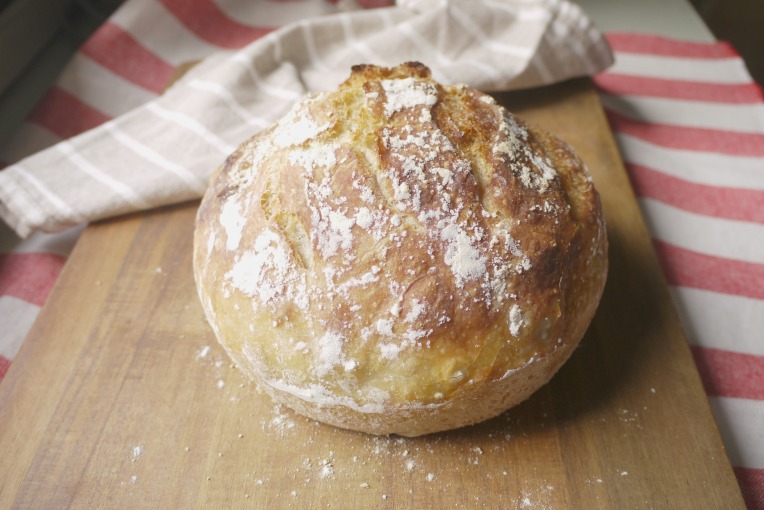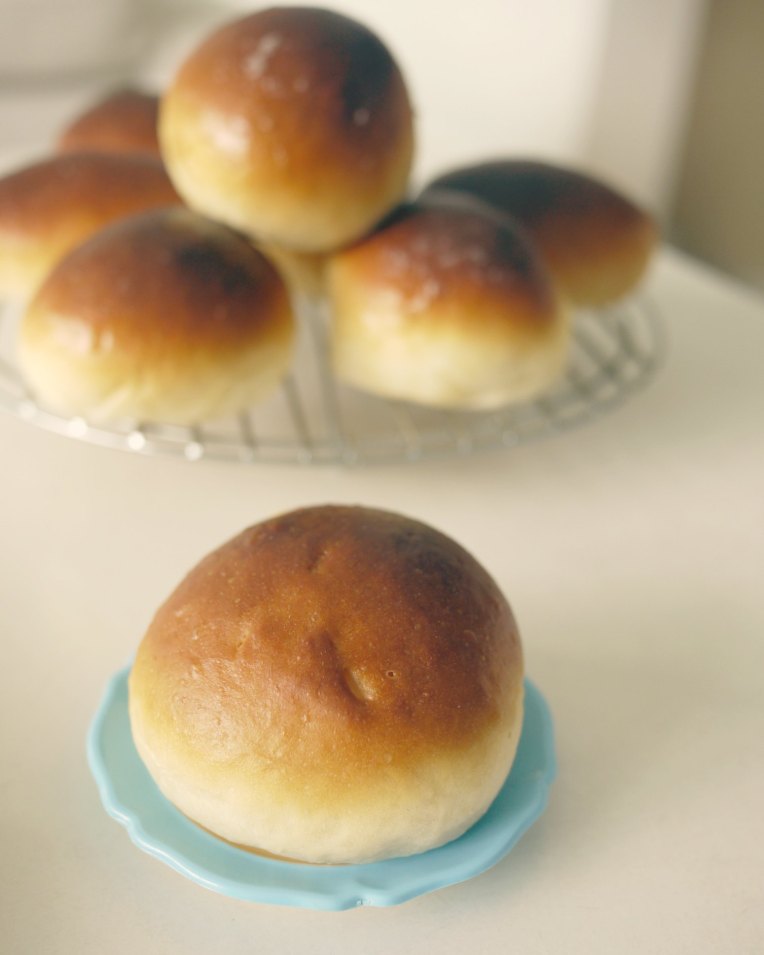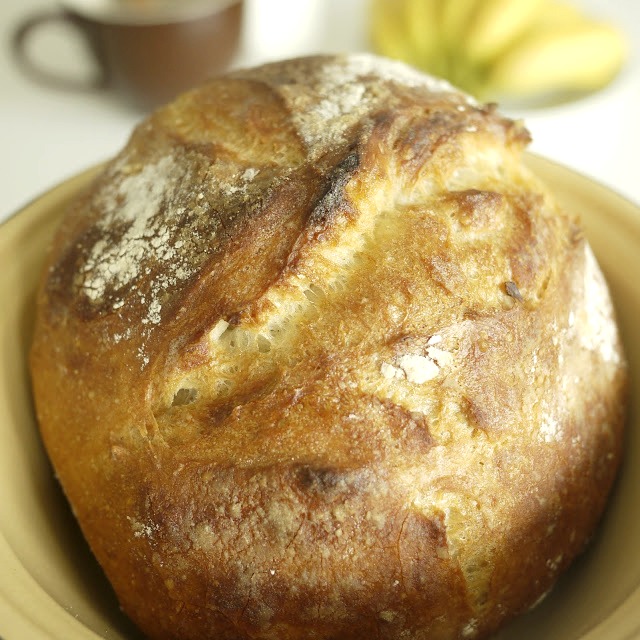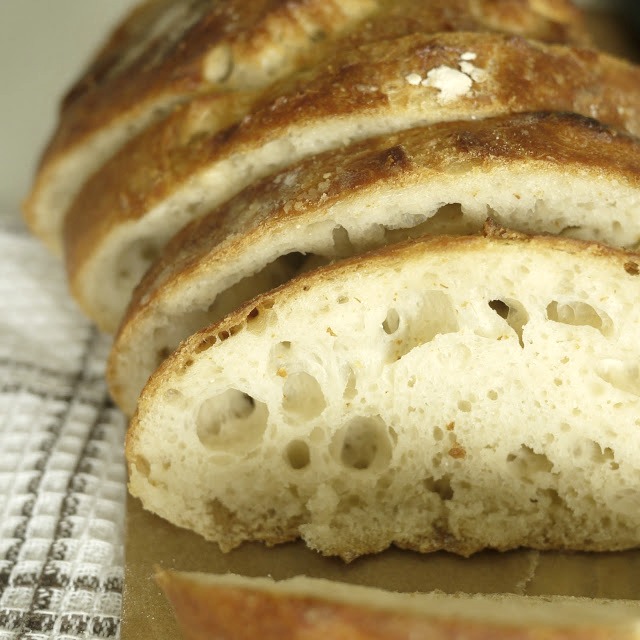While drafting the previous pizza recipe post, where I used the ‘Artisan Bread in Five Minutes’ (ABin5) way for preparing the pizza dough, I realized that I have been making changes to this method since I adopted it two years ago. A new edition of the book has also been released, so here’s a refresher post on baking bread this way.
First, the 3 major changes I have adopted:
____________
/ Earlier, I was weary of adding too much salt into the mixture for fear of, firstly, it will affect the level of rise in the dough (what if I put too much and kill the yeast?), and secondly, it will be more healthy to have lesser salt in the bread. However, I have noticed that there is a difference in the taste when I added up to a full tablespoon of salt into my dough, depending on what salt is used.
/ I have been using ONLY the weighing method to get the amount of flour right, achieving a consistent level of hydration for the dough for every batch. I have noticed with my earlier trials that the ABin5 master recipe is really a very forgiving recipe; no matter how wet the dough is, it still rises predictably, and the bread still come out pretty well. Nowadays, I prefer the dough made with the weighing method, as it is a lot easier to handle, not too runny, allowing me to shape the bread better; most of the dough should go into the bread, not on my hands only to be washed away!
/ I have been using the steam trap method with a simple claypot, instead of the broiler in the oven method. The authors of the book have also mentioned this method as a more convenient one. I do not preheat my claypot though, as my claypot manufacturer’s instruction specifically states that the claypot should not be heated without any liquids in it. So I proofed my bread dough in it (covered with clean, damp tea towel), and bake it in a preheated oven for 30 minutes with lid on, and then another 15-20 minutes without the lid.
____________
RECIPE FOR ARTISAN BREAD IN 5 MINUTES
/Source
____________
3 cups lukewarm water
1 tablespoon instant yeast
1 tablespoon salt
2lb or 910g of plain flour
____________
01. Place water, salt and yeast in a plastic container that is big enough for the dough. This container preferably with lid (if not, cover with cling wrap will do too) will also be the storage container for the dough to be placed in the fridge. Make sure your fridge has a space for it. A 6-quart container is recommended in the book.
02. Add in the flour all at once. Stir with a pair of long chopsticks until the dough comes together, it should be a wet and shapeless one. If yours can be kneaded into a ball at this stage, you have probably used too much flour. You can still save the dough by adding water slowly, till you get the dough to its rightful consistency.
03. Cover the container loosely, saving a gap for the gases to escape as the dough proof.
04. Allow the dough to rise to double its bulk, anything from 2 hours to 4 hours, depending on the room temperature.
05. Once the dough has risen to its max, it will start to settle down, sink a little and form a flat top. This dough is now ready to be used, or it can be stored in the fridge when you are ready to bake a bread or pizza. I prefer keeping it in the chiller for a few hours so that the dough is easier to handle.
06. On baking day, take out the dough from the fridge, and dust the surface with some flour, so that it won’t stick to your hands when retrieving the dough.
07. Pull out a piece of dough and cut out about the size of a grapefruit , or weigh 1lb. Return the rest of the dough into the fridge.
08. Form the dough into a ball, gluten coated. Sprinkle flour on surface as you go for easier handling, but take care not to incorporate the flour into the dough. Handle the dough gently at this stage, do not knead, press or squeeze out the air that has expanded inside the dough.
09. Rest the shaped dough by placing it in a claypot (lightly dusted with flour), from 40 minutes (according to the book’s instructions) or 90 minutes. I let it stand longer till the dough returns to room temperature.
10. Preheat the oven to 230C (450F). When the oven is ready, pour some flour on the bread surface, and slash the loaf with a clean knife or scissors (I have to admit that I find the scissors easier to manage! Just make 3 to 4 decisive fast snips…) so that it does not split at the bottom during baking.
11. Cover the claypot, and quickly place it into the oven, bake for 30 minutes.
12. After 30 minutes, continue to bake at the same temperature for 15-20 minutes, without the cover.
13. When done, remove the claypot from the oven, and let it cool on a rack.
14. Allow the loaf to cool completely on a rack to room temperature before slicing it. Otherwise, the bread will end up with a hard crust and a gummy interior.













